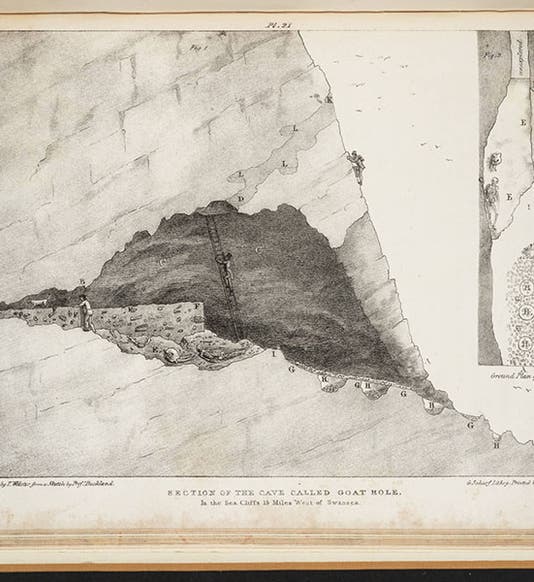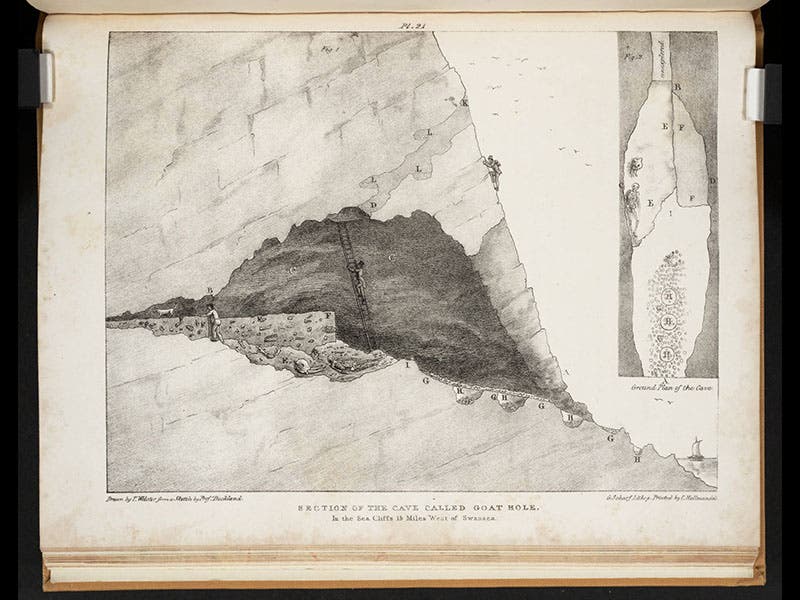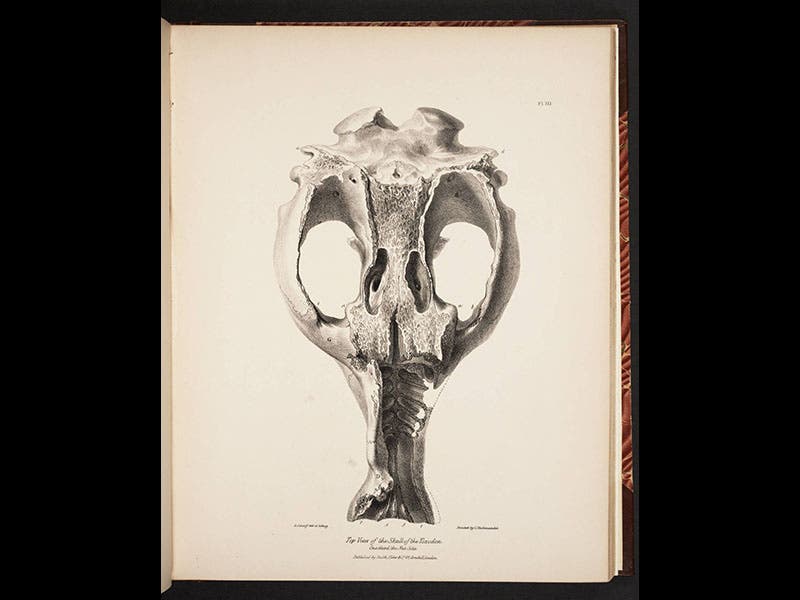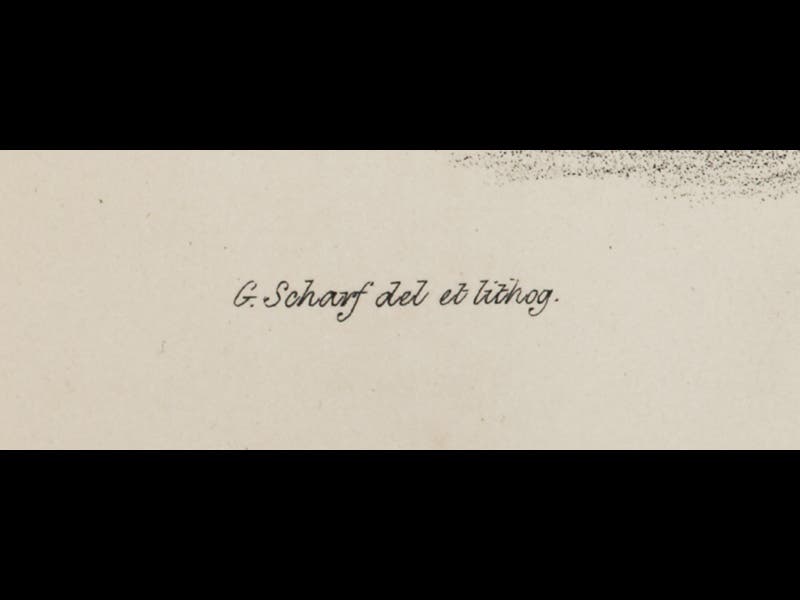Scientist of the Day - George Scharf
George Scharf, a German artist who moved to London, died on Nov. 11, 1860, at age 72. Scharf was one of the earliest English illustrators to master the technique of lithography, and he was much in demand by scientific societies such as the Geological Society of London and the Royal Society of London, to provide lithographs for scientific publications. When William Buckland wanted images of fossil-laden caves for his Reliquiae Diluvianae (1823), Scharf was the lithographer selected (see first image above). When Charles Darwin needed lithographs of the fossil mammals he had found in South America, such as his giant Toxodon skull, Scharf was chosen (although Darwin did complain about Scharf's high prices) (second image). Scharf also did the illustrations for Buckland's 1835 paper on a recently-found pterodactyl (third image), and he did the lithograph of a Mylodon for Richard Owen's 1842 paper on a giant sloth (fourth image). There are probably many other lithographs by Scharf that have been unrecorded, even though Scharf signed every one (fifth image, a detail of the fourth image), because unfortunately historians of science pay little attention to lithographers. When we notice them, we add Scharf’s name to the metadata for the images in the Library’s Digital Collections. All of the above images can now be found by searching for “George Scharf.”
The lithographer George is sometimes confused with his son, George Jr., who became the first director of the National Portrait Gallery in London, and was later promoted to Sir George. Lithographer George was never, unsurprisingly, considered worthy of knighthood.
Dr. William B. Ashworth, Jr., Consultant for the History of Science, Linda Hall Library and Associate Professor, Department of History, University of Missouri-Kansas City. Comments or corrections are welcome; please direct to ashworthw@umkc.edu.











